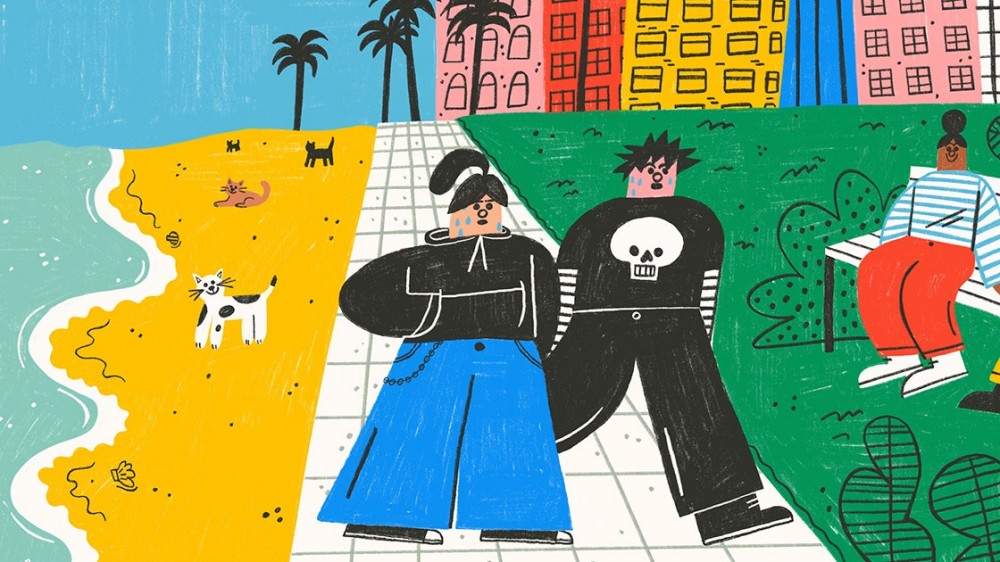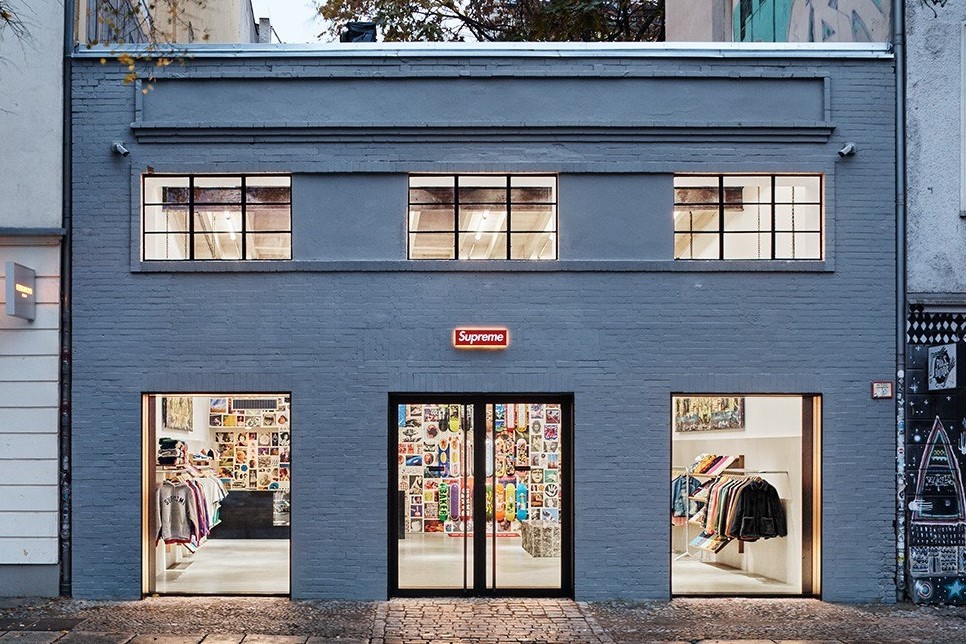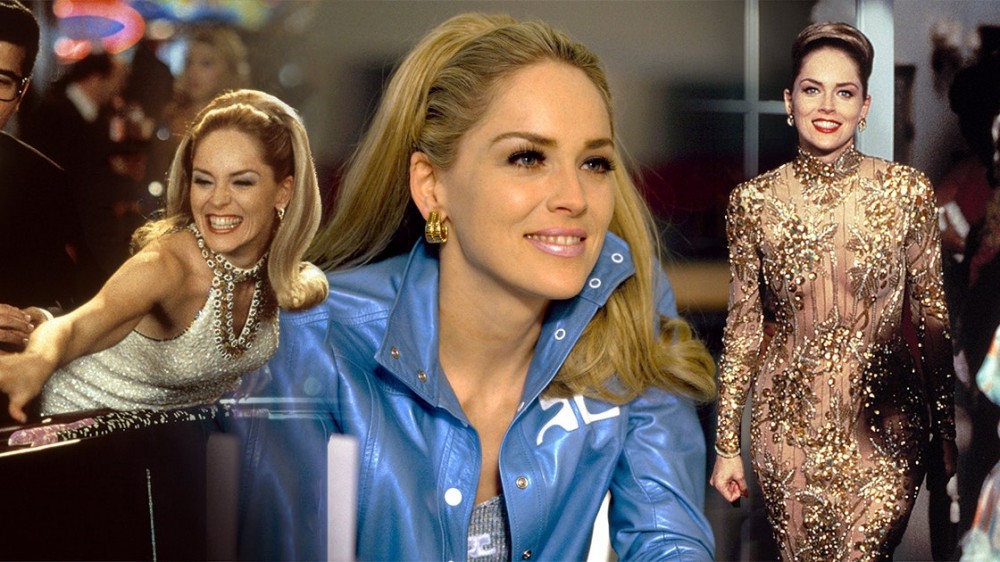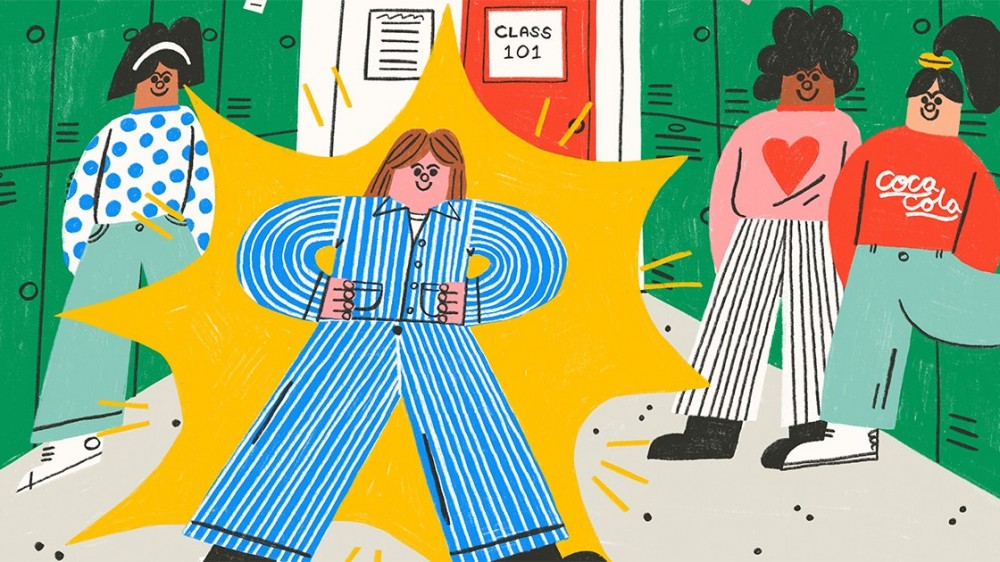
American Gothic: Scenes from the Dark Side of Miami
Growing Up In Style is a series about the connection between fashion and local life in America, past and present.
To listen to Suzy Exposito read this profile, click the play button below:
WHEN people think of Miami, it’s hard not to think of its longtime status as the playground for foreign diplomats and socialites, not to mention many of the South’s greatest rappers and athletes, all modern demigods partying away in Art Deco Mount Olympus. But chip away at the bleached-pastel veneer, and you’ll find its more intriguing, Stygian side. This is the Miami I know best: a sinister place where murders of crows stalk green parrots in palm trees, feral cats rove North Beach, and a midday monsoon can flood your neighborhood for days.
Florida in the late ’90s produced ghastly rock acts like Marilyn Manson and Jack Off Jill—and, eventually, sullen teenagers like me. I raided my Gen X parents’ stash of alt-rock cassette tapes and Anne Rice novels in search of a persona to set me apart from my peers. By 2001, I had gone from wearing school uniforms splattered in paint to black hoodies, chokers, and wide-legged JNCO pants. My friends and I, enthralled by the formidable clique of witches in The Craft—or more familiar conduits to the spiritual realm, like our superstitious tías and the beloved Puerto Rican astrologer Walter Mercado—shared books about Wicca and the cosmos. Once we got a taste of the darkness, and the fear it inspired in our classmates—girls who wore striped polo shirts and denim flares—there was no going back.
There’s a certain asceticism to being goth in hot weather. I would saunter across the open-air Sunset Place mall, the steel chains that hung from my pants burning to the touch under the eternal sunshine. My parents, my Cuban-American father and Belizean mother, who fell in love to the sounds of New Order and Depeche Mode, seemed bemused by my sudden goth turn. “Put on some shorts like the other kids,” said my dad before dropping me off at day camp the summer before high school. “You’re gonna get heatstroke!”
It was a life of agony, and it didn’t come cheap. Once my dad started a job as manager of an Italian-Cuban café in the city of Hollywood, just north of Miami, he decided that I needed a work ethic more than I needed a pair of knee-high Demonia boots. And so I became a part-time barista at 14, serving cortados to go through a ventanita—a little window, a Cuban-American invention that predated the Starbucks drive-through. Like most first jobs, it was hardly hip. My uniform was a giant Italian soccer jersey, slung slipshod over my long-sleeved fishnet shirt and ripped jeans. I quickly took to eye rolling at leering comments from older male customers, but one day, two young guys with jet-black hair, face piercings, and tattooed biceps approached the ventanita with a look of recognition in their eyes. “Come to our shop,” they said excitedly. “It’s called Mosh Pitt. We’ll give you a discount if you give us free coffee!”
I didn’t yet know about Mosh Pitt. I knew, of course, about the famed chain store Hot Topic at Sunset Place: a dimly lit vortex where alt kids acquired band tees and other totems of nonconformity. But that had become the domain of raccoon-eyed cherubs, like a middle school crush of mine, a baby goth who’d rat on shoplifters in exchange for free Slipknot buttons. Though Mosh Pitt was stocked with many of the same wares, it seemed a step up for me: a worldly teen who’d just discovered Sonic Youth and the notion that where you bought something was almost as important as what you bought.
On an 85-degree day in February, I tossed aside my soccer jersey and marched down Hollywood Boulevard with two cappuccinos in hand. The smell of leather and frankincense wafted from the inside of the shop, where I found the guys from the café seated on a couch made from rubber tires, listening to Ministry. Hours later, I emerged with a laundry list of records to buy, a set of studded wrist cuffs, and a patent-leather corset-shaped purse that could hold only my tiny purple Nokia phone. But I also left with the sense that I wasn’t just “going through a phase.”
The tropical gothic style I cultivated as a teen would evolve as I got older and lived in New York, Paris, and now Los Angeles. It’s a more versatile look, which incorporates my innate witchiness with my equally innate Caribbean Latina femininity: I pair gold hoops and hair wraps with heavy metal–band tees and black cigarette pants. I also go lighter on the hardware—gold jewelry with protective evil-eye charms and sigils that won’t clash with my tattoos. It’s a far cry from the year-round, brightly hued athleisure looks Miami girls generally sport, but one thing I learned from them is that statement sunglasses are a must.
My dad didn’t work at the café forever; and when he got a new job, I never went back to Mosh Pitt, which has since closed down. These days, when visiting family, I like to wander Miami’s art district and peruse the Wynwood Shop, a haven for local indie vendors selling dainty skull stud earrings alongside punk-style pyramid bracelets, as well as Art By God, home to bizarre curios like taxidermy, crystal jewelry, and fossils. I might pick something up from Miami-based clothing brand Deep Antiquity, which specializes in light, summer-friendly goth wear, beach towels, and even votive candles, or get my nails done at Saints-N-Scissors, where the stylists cater to everyone but share an affinity with those for whom every day is Halloween. These stores and salons are generally uncrowded, but they’re not empty either, and when I see a gaggle of sour-faced kids smoking outside Sweat Records, or mysterious women tossing roses into the ocean for Yemaya, I know a gothic energy is in the air—even if it is our little secret.
Suzy Exposito is a music reporter for the Los Angeles Times.



